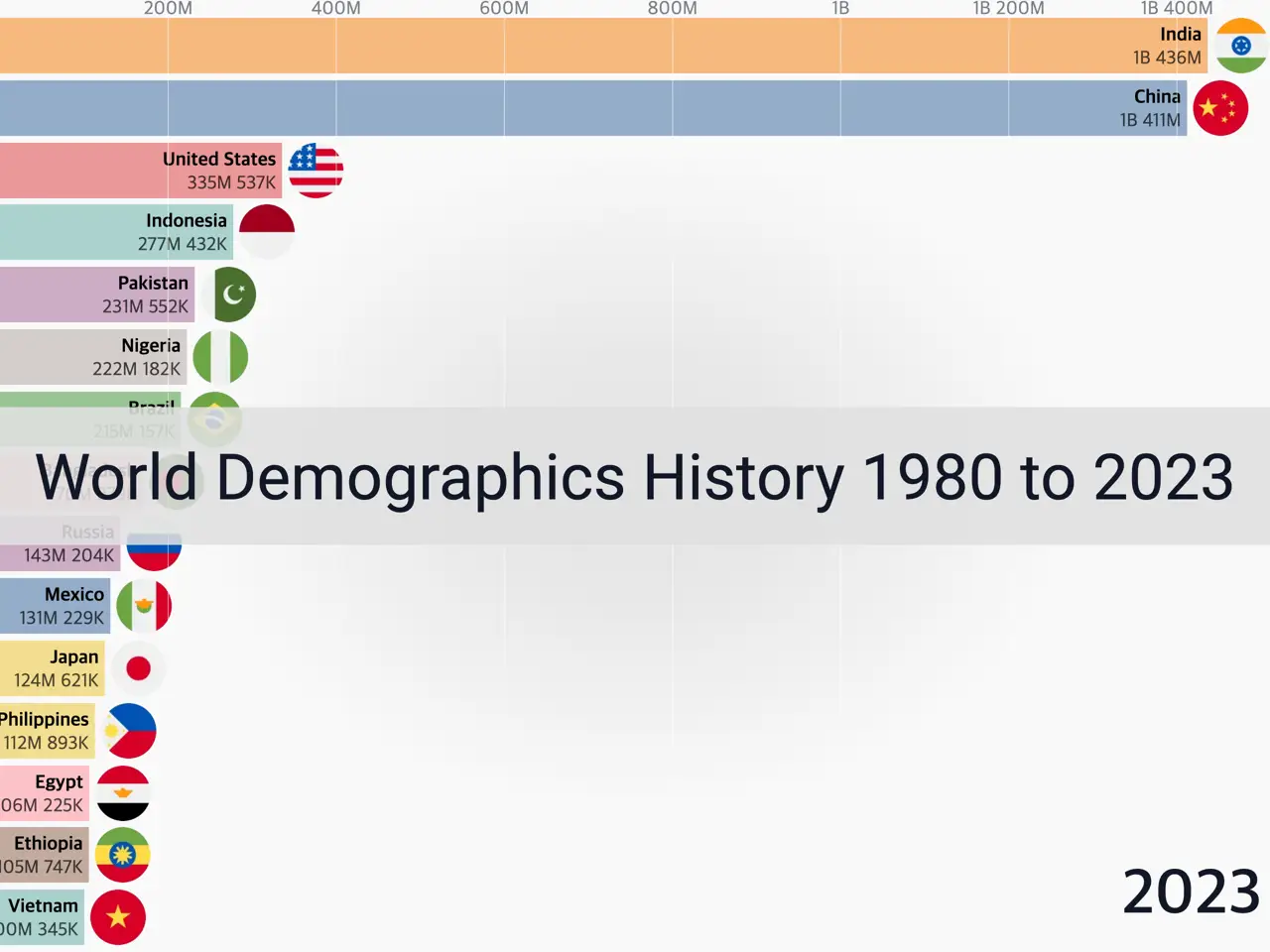In this article, we take a fascinating journey through world demographics in 2023, leveraging authentic IMF data. The aim is to highlight population patterns, variations, and the overall scale of human presence on our planet. We begin this exploration from the tenth rank and move upwards, revealing the most populous countries. So, let's embark on this insightful expedition.
Mexico
Rank: 10 | 131M 229K (131,229,999)

Beginning at rank 10, we find Mexico, home to 131.22 million people, showcasing its significant standing on the global population scale. Mexico, with its rich cultural heritage and diverse landscape, plays a substantial role in North America. Its bustling cities and rural areas alike contribute to this impressive population figure. Mexico's demographic dynamics are important for understanding regional and global trends.
Russia
Rank: 9 | 143M 204K (143,204,000)

Just above, at rank 9, is Russia with a population of 143.20 million, reflecting the expansive population across its vast territory. Russia, being the largest country by land area, hosts a diverse array of ethnicities and cultures. Its population spans across bustling metropolises like Moscow to remote Siberian towns. This population spread offers a unique perspective on demographic dispersion.
Bangladesh
Rank: 8 | 170M 279K (170,279,000)

At rank 8, we discover Bangladesh, a densely populated country housing 170.27 million people despite its small geographic size. Bangladesh's population, largely concentrated around urban centers like Dhaka, depicts a dynamic mix of age groups. The country's demographic trajectory highlights important lessons in managing population growth in limited spaces.
Brazil
Rank: 7 | 215M 157K (215,157,000)

Brazil stands at rank 7, demonstrating its prominence in South America with a notable population of 215.15 million. Brazil, known for its rich biodiversity and cultural vibrancy, shows a distinct demographic pattern. Urban areas like Sao Paulo host a large part of its population, while the Amazon region is sparsely populated. This distribution is important in understanding Brazil's demographic landscape.
Nigeria
Rank: 6 | 222M 182K (222,182,000)

In the sixth position, Nigeria represents the African continent with an impressive 222.18 million people. Nigeria, Africa's most populous country, has a demographic composition that is youthful and dynamic. Its population is spread across numerous ethnic groups, creating a vibrant cultural tapestry. Studying Nigeria's population helps to shed light on broader African demographic trends.
Pakistan
Rank: 5 | 231M 552K (231,552,000)

Halfway through our list at rank 5, we find Pakistan, a South Asian nation with a robust population of 231.55 million. Pakistan's population is a mix of various ethnicities and linguistic groups, underpinning its diverse cultural heritage. The country's demographic profile, including its youth bulge, has significant implications for its economic and social dynamics.
Indonesia
Rank: 4 | 277M 432K (277,432,000)

Edging closer to the top, at rank 4, Indonesia highlights its archipelagic extent with a population reaching 277.43 million. Indonesia's population is spread across thousands of islands, making it a unique case of demographic distribution. The country's demographics have evolved alongside its economic development, shaping its present and future.
United States
Rank: 3 | 335M 537K (335,537,000)

Taking the third spot is the United States, illustrating its influential role in the world with a population of 335.53 million. The US's demographic profile is highly diverse, with large urban populations and wide-ranging ethnicities. Changes in the US population affect not only national policies and economy but also have global implications.
China
Rank: 2 | 1B 411M (1,411,960,000)

Coming in second, we see China, long known as the most populous nation, now at 1.41 billion inhabitants. China's vast population spans across numerous provinces, with distinct cultural and linguistic profiles. China's population policies, like the One-Child Policy, have had far-reaching effects on its demographics, making it a significant case for demographic studies.
India
Rank: 1 | 1B 436M (1,436,510,000)

Finally, at the top of our list, India surpasses all in 2023, being home to a staggering 1.43 billion people. India's diverse and youthful population underpins its demographic significance. Its sheer population size and diversity pose both challenges and opportunities for the country, influencing its socioeconomic landscape.
From this exploration, it is clear that world demographics are ever-changing, with distinct patterns and trends, greatly influencing our global society. Understanding these patterns helps us appreciate the human aspect of global issues. As we progress into the future, these demographics will continue to evolve, creating new narratives in the story of human civilization.
















